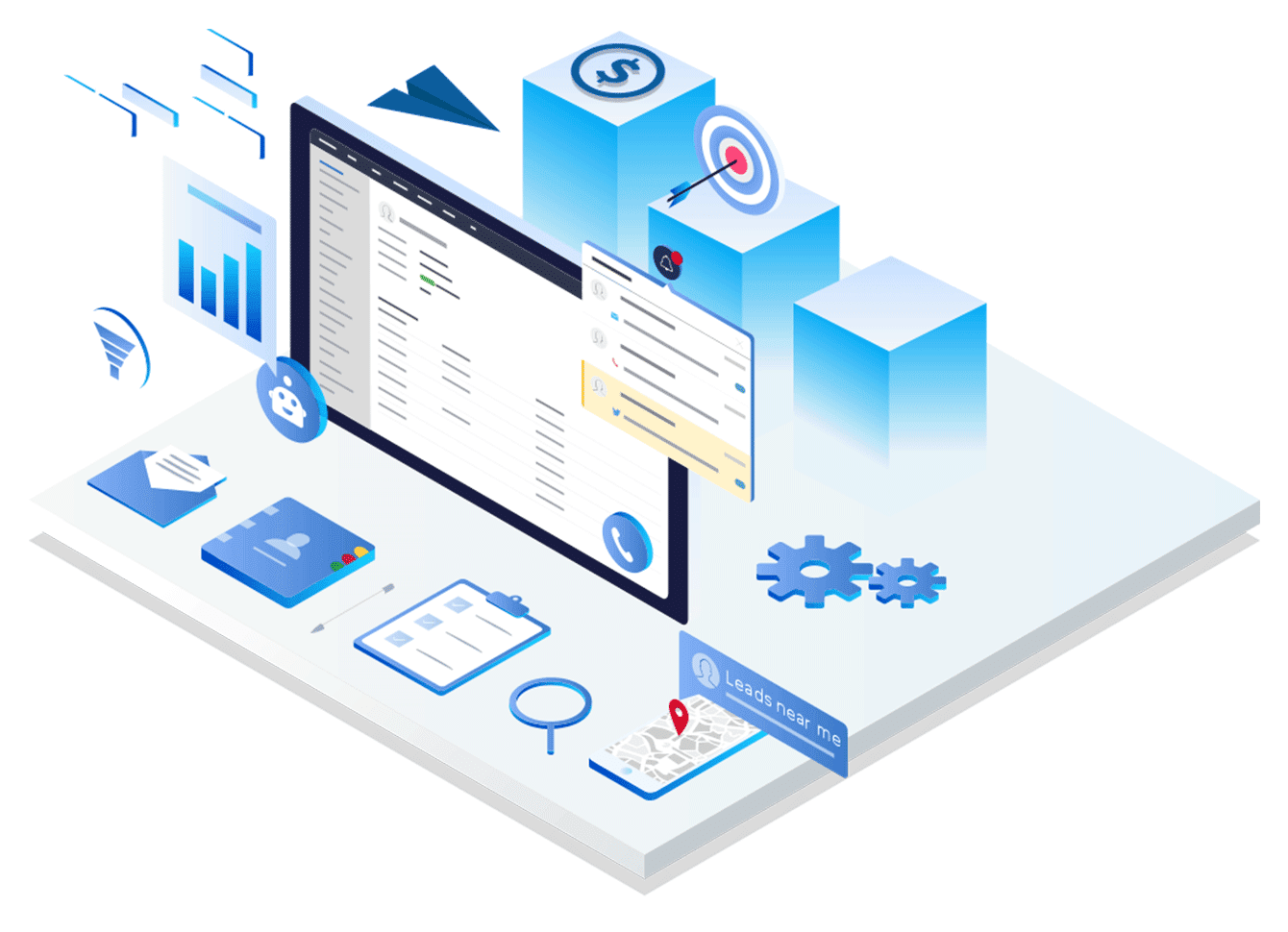4 Steps To Get Started With Generative AI in B2B Marketing

AI isn’t just for B2C companies. Learn how this technology can improve client relationships and help you grow.
B2B marketers are used to wearing a bunch of different hats, from planning journeys to building out first-party data and account-based marketing (ABM) strategies. If that sounds like a lot, it’s because it is. Every marketer we know could use a personal assistant, but with budget restrictions and reduced resources, that’s not always feasible. The good news is that artificial intelligence (AI) in B2B marketing can deliver the productivity boost you need.
Our research has found that marketers estimate AI will save them an average of five hours a week. However, nearly 40% of marketers say they don’t know how to get the most out of new AI capabilities, especially generative AI. This means we are in a crucial time of learning and optimizing.
There’s one more twist. AI adoption is about organizational buy-in as much as individual training. We spoke with Jaime López, senior director of marketing operations at Aiven.io, about how you can set up your company and immediate team for AI success.
There’s one more twist. AI adoption is about organizational buy-in as much as individual training. We spoke with Jaime López, senior director of marketing operations at Aiven.io, about how you can set up your company and immediate team for AI success.
4 steps for building AI in B2B marketing
- Unify and prepare your data for AI
- Start being your company’s AI leaders
- Prepare your MarTech build for scale and flexibility
- Build a scalable AI roadmap and a culture open to innovation
- How Marketing Cloud Account Engagement can help AI in B2B marketing
Unify and prepare your data for AI
Sales and marketing alignment is the foundation of good B2B marketing. And data is the starting point for the alignment. AI models need to be trained to produce high-quality output and they can’t learn the right lessons without good data.
This is a big concern for B2B marketers and revenue teams that have disconnected data systems. Before you can see an impact with AI in B2B marketing, you need to unify that customer data.
“Two thirds of marketers say their company’s data, the foundational layer, is not set up for generative AI,” López explained.
Disparate data streams often live in different tools, departments, or databases. This can make it very difficult to get a complete picture of customers, identify the value of accounts, and score or grade leads. It’s a recipe for a less-informed customer strategy.
This is why you need to prepare your data infrastructure for AI by unifying your data. Combining all your data on one platform gives your AI the most complete picture of your customers to work off. Simply put, you need this data to be clean (no errors or duplications) and complete (no missing info), so AI can interpret it and deliver useful feedback.
Start being your company’s AI leaders
The good news is that your marketing team has a great opportunity to set the tone for how AI is used across your organization. You’re closer to the customers than most other departments, and can show how adopting AI helps you be more efficient.
“Marketing ops professionals in particular have a very comprehensive view of the customer journey, they have access to a wealth of data, and they have the analytical skills to leverage it,” López said.
But marketing can’t do this alone. The entire organization needs to read from the same playbook. This starts by ensuring your organization has clearly documented AI policies and boundaries, and that those policies align with your wider business objectives. Making these training resources accessible to all departments – not just marketing – is critical to ensure everyone is using AI ethically and safely.
Leading AI adoption across the entire organization can be overwhelming. You need to start small with narrow and impactful use cases. It’s tempting to deploy AI across all facets of marketing, but a focused approach with smaller, quicker use cases allows for deeper understanding, clear measurement of impact, and iterative learning.
This could mean starting with AI-driven personalization in email marketing or predictive analytics for lead scoring, or taking advantage of generative AI capabilities to help scale content creation.
Small wins help build momentum and support for more extensive AI applications.
Prepare your MarTech build for scale and flexibility
Before you start realizing the power of AI in B2B marketing, it’s essential to maximize the out-of-the-box capabilities of your existing stack, particularly your marketing automation and customer relationship management (CRM) platforms.
If you’re not using a platform with built-in AI capabilities, the next step is evaluating your existing stack for AI compatibility.
“Ask yourself: can your current tools support AI?” López said. “Will they support it in the future? And if not, what’s needed to get there? This step is crucial for building a roadmap that incorporates AI seamlessly.”
Finally, choose technologies that will grow with your AI ambitions, accommodating future advancements without skipping a beat. AI will place a premium on scalability and flexibility. Your infrastructure must handle increased data loads and complex processing. The biggest benefit at the heart of almost every AI offering is “do more faster and better,” and you need to be sure that proposition holds as your teams, audiences, and goals grow.
Build a scalable AI roadmap and a culture open to innovation
You can’t finish until you start, so in some ways the most important step is to set the direction and make the initial, strategic move. That’s not to say you should rush into it, only that it’s time to get the engine running. You’ll also want to make sure you’re fueling the engine properly, and that really comes down to two things: culture and strategy.
A data-driven culture is the foundation of successful AI in B2B marketing implementation. It’s not primarily about technical expertise, López explained, so much as curiosity and literacy.
“This isn’t about becoming data scientists overnight, but ensuring everyone, from designers to performance marketers, has basic AI literacy to contribute meaningfully,” López said. “We owe it to our teams to give them that bridge to the future.”
Ensure your decisions are backed by data, showing accountability across the team. In the world of AI, understanding and interpreting data is no longer optional — it’s essential. That may require skills assessments and training to ensure your team is properly set up for success. Ensuring everyone has AI literacy and can contribute meaningfully is crucial.
As AI evolves, your strategy should scale and adapt to those changes, allowing for a smoother journey. This means setting clear milestones, from early adoption to full integration, ensuring that your journey is progressive and adaptable.
Experimentation is also vital – and the only proven way to constantly improve your results. Try new things, learn from failures, and celebrate successes. With the dramatic increase in scale that AI provides us, we can afford to test more, fail more, faster and at less cost.
Lastly, promote diversity in your approach. This doesn’t just mean within our teams, but in the areas, scope and mission of your AI projects. Different perspectives lead to innovative solutions, and diverse project scopes ensure we’re learning and growing in all directions.
If you have taken AI literacy seriously, your team members will be able to both innovate in their area of expertise and constructively challenge the decisions of the team at large. In the end, a successful AI takeoff is not led by only one or two people: it’s a true team effort.
How Marketing Cloud Account Engagement can help AI in B2B marketing
Once you have your data foundation in place, your AI can get to work. Let’s look at Marketing Cloud Account Engagement as an example.
Its AI can help identify high-value accounts that are worth your team’s maximum time and effort and give recommendations about when, how, and how much to reach out to them. It can get as granular as using lookalike audiences and predictive AI to identify ideal send times, or creating personalized subject lines with generative AI.
Here’s how Marketing Cloud Account Engagement’s AI capabilities can boost your AI in B2B marketing efforts.
Content creation
Struggling to come up with an eye-catching email subject line, or need copy ideas for your landing page? With a human-in-the-loop approach, generative AI capabilities in Marketing Cloud Account Engagement can help.
AI can help you write:
- Email content
- Email subject lines
- Form pages
- Landing pages
While it’s still crucial to have a human guide these efforts (trust us: customers can tell), AI can be the marketing assistant you never knew you needed.
Segmentation
Now that you’ve broken down the silos in your data collection and have all your customer data in one place, Data Cloud’s AI capabilities can save time and money by segmenting that information.
With customer data segmented, you can then build better campaigns targeted at specific audiences.
Lead and behavior scoring
As a marketer, you want to know how close your targeted accounts are to buying, so you can react with the appropriate content.
AI can provide a representation of the likelihood that your leads will purchase. Drawing from your unified customer data, you’ll have the insights to understand how your leads are engaging and the reason behind their behavior scores.
Campaign insights
You don’t need to do manual data analysis to figure out what works and what doesn’t. That’s a powerful way to use AI in B2B marketing — letting AI surface those insights, so you can make more informed decisions.
AI uses machine learning to find data related to engagement activity, content, and audience characteristics to provide in-depth insights about your campaigns.
Ultimately, building a strong foundation for AI is just as important as actually using it. Having the right framework will help you to get the most of AI. It will make you more competitive today and in the future – because the next big innovation is only an idea away!
If you are interested in more information about Salesforce, contact our team of experts by clicking.



